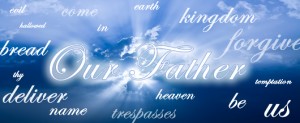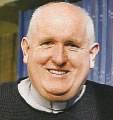The Lord’s Prayer and Liturgy
When one of the disciples comes to Jesus and said “Lord teach us to pray, just as John taught his disciples” (Luke 11:1) that disciple was not asking for a lesson in how to pray. The Apostles were religious individuals from a culture that prayed in public frequently. Their mothers had taught them how to pray! They prayed before (and sometimes recited psalms after) every meal, they prayed regularly in the synagogue and in the Jerusalem Temple on major feasts. The Apostles knew how to pray – that was not what they were asking for.
What they wanted was a special Jesus prayer. John the Baptist must have taught his followers a special prayer, something that they alone recited; a prayer that summed up the Baptist’s teaching and ideas. Scholars would love to know what that prayer was, but no record of it has survived.
In the same way, the disciples of Jesus wanted a characteristic prayer, one that was distinct to them. A prayer that summed up “the Jesus movement”, a prayer that identified them as the followers of Jesus.
The Lord’s Prayer does all of those things, in compact beautiful phrases it sums up key ideas from the preaching and teaching of Jesus:
His relationship with God as Father,
His bringing us into that relationship,
The holiness of the Father,
The doing of the Father’s will,
The coming of the Kingdom,
The bread of the Day,
The forgiveness of sin,
The demand to be forgiving,
The avoidance of the evil time.
All those ideas, which are so central to the Good News proclaimed by Jesus are there.
Ever since Jesus taught that prayer to his followers they have prayed it. It is recorded in gospels of Matthew and Luke and in one of our earliest Christian writings outside the New Testament The Didache.
There, it is preceded with this advice:
“Do not pray like the hypocrites, but rather as the Lord commanded in His Gospel, like this: Our Father …”
And it is followed with the instruction: “Pray this three times each day.”
That is perhaps the earliest surviving liturgical rule of the Church; a church authority of the time declaring how Christians were to pray. As a guide for the Church’s practice of public prayer it is an instruction that we have tried to follow ever since. Even today priests and religious pray the Our Father in the liturgy of Morning Prayer, Daily Mass and Evening Prayer to keep that rhythm of the three recitations of the Lord’s Prayer per day.
What makes the Our Father and all Christian worship distinctive is not merely the words used. There is something that the disciples of Jesus have that the followers of John the Baptist and followers of all other spiritual traditions lack. The difference is an obvious one; what the Christians have that no other group has … is Jesus Christ.
In prayer, we lift our mind and heart to God, and liturgy is more than prayer. The difference emerges when a group of Christians gather to pray together. Jesus has promised us that “where two or three are gathered together in my name, there I am in the midst of them.” (Matt 18:20) What makes our liturgy Christian is that Jesus Christ is in the midst of it. It is his presence and his power that infuses it and make it effective.
This is why in our liturgy the celebrant often declares to the congregation: “The Lord is with you.”
The truth that the ritual repeatedly puts before us, is that we are not praying alone. Having come together – congregated – we are Church. We pray with all those assembled with us, and with all those assembled elsewhere and elsewhen. We pray with our fellow Church members of all times and places. We pray as the Church, the bride of Christ, and Christ picks up our prayer and makes it part of his lifting up the world to God the Father. When we join in liturgical prayer we join in the saving action of the god-man Jesus Christ. Our humble prayers literally help save the world!

 Entries(RSS)
Entries(RSS)